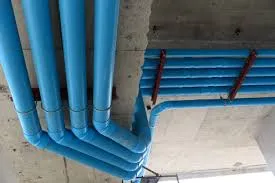Dec . 04, 2024 07:54 Back to list
HDPE Pipe Size Guide for Manufacturers and Installation Tips
An Overview of HDPE Pipe Size Charts and Manufacturers
High-Density Polyethylene (HDPE) pipes have become increasingly popular in various industries due to their durability, flexibility, and resistance to corrosion. To effectively utilize HDPE pipes, it is essential to understand their sizing, which is typically represented through size charts provided by manufacturers. This article explores the significance of HDPE pipe size charts, their standards, and how different manufacturers contribute to the availability of these essential products.
Understanding HDPE Pipe Sizes
HDPE pipes come in various sizes and dimensions, allowing for flexibility in application across different sectors, including water supply, agriculture, drainage, and industrial processes. The size of HDPE pipes is usually categorized by their nominal diameter, which can range from a few millimeters to over 1 meter (inches to several feet). The size of the pipe is directly related to its capacity to transport various substances, making it crucial to select the right dimensions for any project.
When looking at a typical HDPE pipe size chart, one can expect to find information including the nominal pipe size (NPS), outer diameter (OD), wall thickness, and internal diameter (ID). Additionally, engineers often refer to the SDR (Standard Dimension Ratio), which expresses the relationship between the pipe's diameter and its wall thickness. The SDR is a critical factor that informs the pipe's pressure rating, which is vital for determining its suitability for specific applications.
The Importance of HDPE Pipe Size Charts
Size charts are indispensable tools for engineers, architects, and contractors. They help in making informed decisions regarding the right pipe size needed for a particular project while ensuring compliance with engineering standards and regulations. Incorrect pipe sizing can lead to a variety of issues, including pressure loss, increased friction, and eventual failure of the piping system.
Moreover, HDPE pipe size charts simplify the selection process by categorizing pipes based on their intended use. For instance, different charts may exist for residential plumbing applications versus large-scale industrial piping systems. Understanding these distinctions enables professionals to optimize their systems effectively while minimizing material costs and potential wastage.
Common Standards Governing HDPE Pipes
hdpe pipe size chart manufacturer

Several organizations set the standards for HDPE pipe sizes, ensuring that they meet specific quality, safety, and environmental considerations. The American Society for Testing and Materials (ASTM), the American Water Works Association (AWWA), and the International Organization for Standardization (ISO) are among the key bodies that publish guidelines for HDPE pipe standards.
Manufacturers typically adhere to these standards, which helps ensure the quality and performance consistency of their products. As a result, builders and contractors can trust that the HDPE pipes they select will perform reliably in accordance with established metrics and requirements.
Leading Manufacturers of HDPE Pipes
As the demand for HDPE pipes grows, several manufacturers have emerged as leaders in the market. Companies like JM Eagle, ADS (Advanced Drainage Systems), and Charlotte Pipe have established themselves as reputable suppliers of HDPE products. These manufacturers offer a wide range of sizes and specifications, accompanied by detailed size charts to assist their customers.
Each manufacturer may have its own unique sizing system and specifications. Therefore, when selecting an HDPE pipe, it's always advisable to consult the specific size chart provided by the manufacturer to ensure compatibility with other components, such as fittings and valves.
Conclusion
In summary, HDPE pipe size charts are essential tools for anyone involved in the construction or maintenance of piping systems. They facilitate the selection of appropriate pipe sizes and ensure compliance with industry standards. With leading manufacturers contributing to the quality and availability of HDPE pipes, professionals can achieve effective and efficient results in their projects.
As the construction industry continues to advance and seek sustainable solutions, the role of HDPE pipes and their associated size charts will undoubtedly grow in importance. Whether for water supply, drainage, or industrial uses, understanding the specifications and options available is crucial for achieving long-lasting piping solutions.
-
High-Quality PVC Borehole Pipes Durable & Versatile Pipe Solutions
NewsJul.08,2025
-
High-Quality PVC Perforated Pipes for Efficient Drainage Leading Manufacturers & Factories
NewsJul.08,2025
-
High-Quality PVC Borehole Pipes Durable Pipe Solutions by Leading Manufacturer
NewsJul.08,2025
-
High-Quality PVC Borehole Pipes Reliable PVC Pipe Manufacturer Solutions
NewsJul.07,2025
-
High-Quality UPVC Drain Pipes Durable HDPE & Drain Pipe Solutions
NewsJul.07,2025
-
High-Quality Conduit Pipes & HDPE Conduit Fittings Manufacturer Reliable Factory Supply
NewsJul.06,2025

